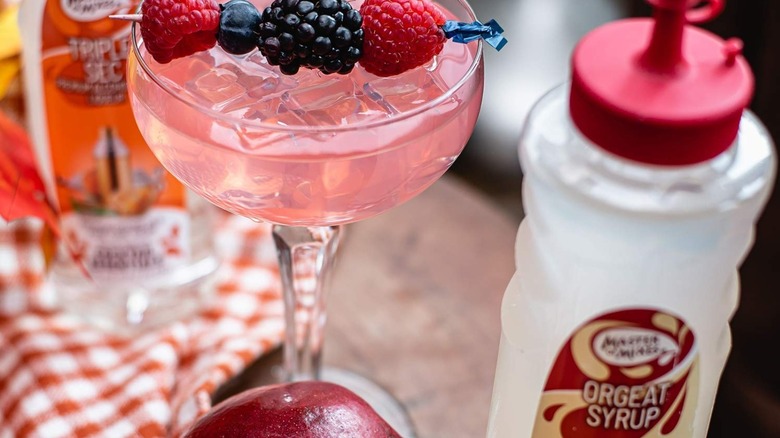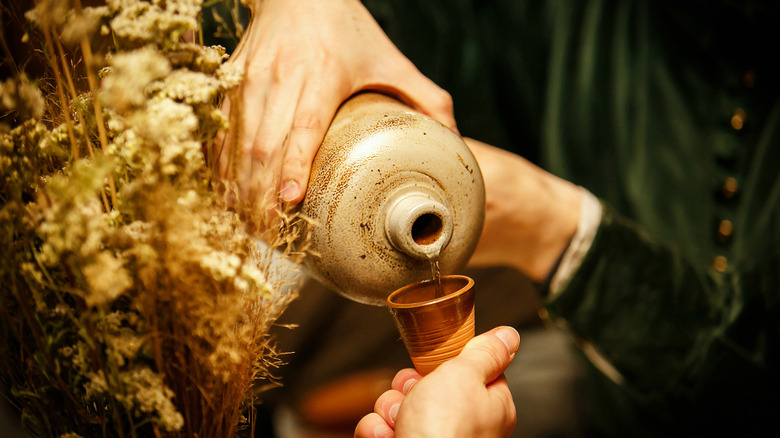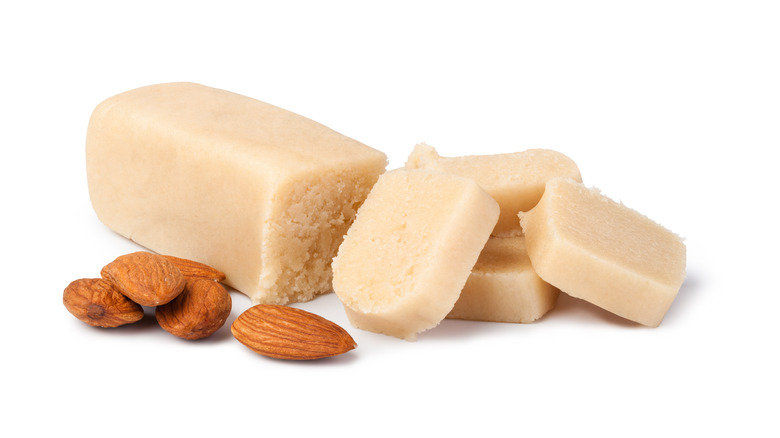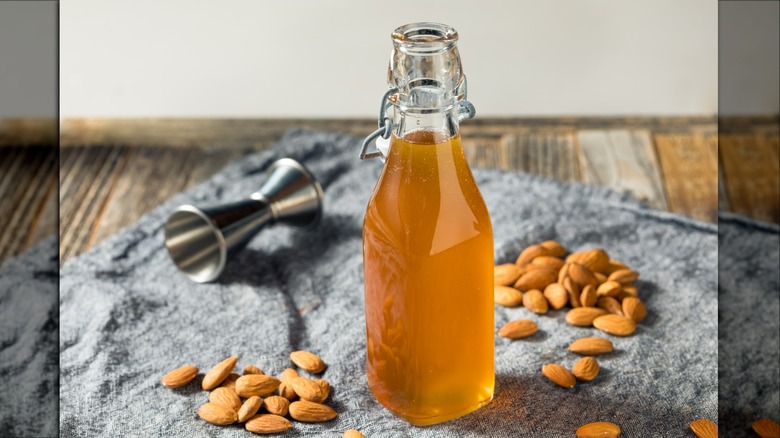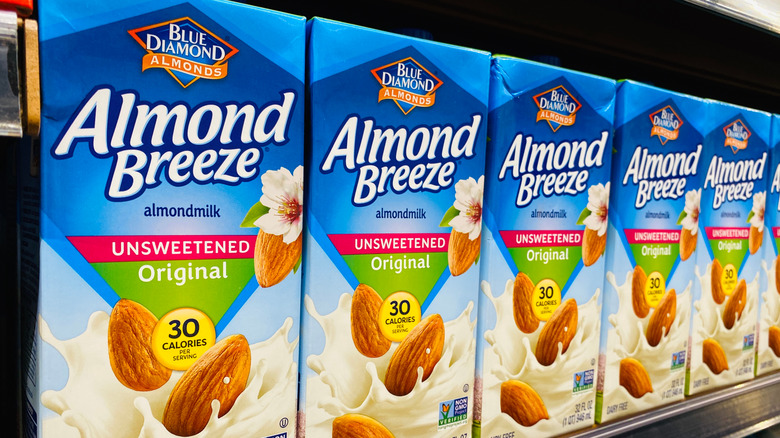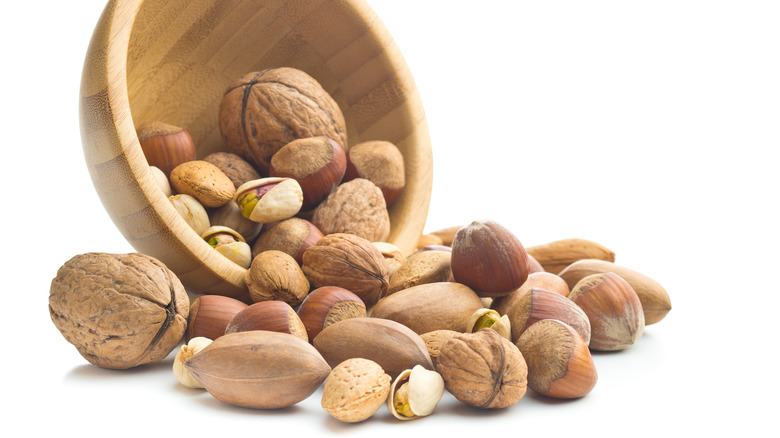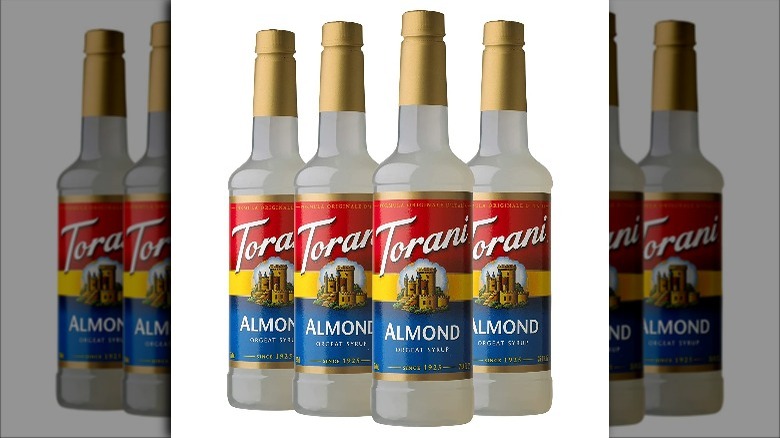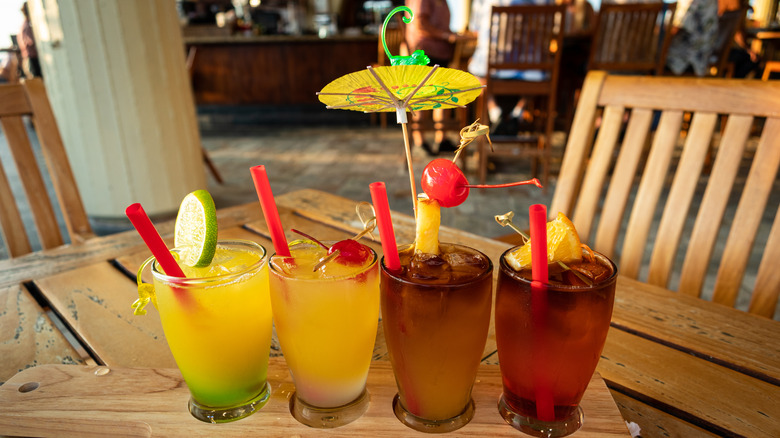What Is Orgeat And What Does It Taste Like?
Before you commit to reading an entire article about orgeat, there's one thing we'd like to set straight right from the outset: the way you're saying the word in your head is probably incorrect. Unless you're already familiar with this ingredient (and perhaps even if you are), you may be thinking it should be pronounced or-geet or maybe even "orgy at," as in the question we so often find ourselves asking, "Where's that there orgy at, anyway?" (JK, we never get invited to these.)
To set the record straight, the word is pronounced as or-zhat, with two equally stressed syllables. As to how you say the "zh." If you're not old enough to remember the late Hungarian actress Zsa Zsa Gabor, this YouTube video showing several bartenders saying the word "orgeat." As to what orgeat actually is, Punch Drink says it's a (usually) almond-flavored syrup that is most commonly used as a cocktail ingredient but has roots that extend back to the Middle Ages.
History of orgeat
The earliest version of orgeat most likely did not contain almonds at all. Alcohol Professor explains that the word orgeat itself derives from an old French word meaning barley water, and Punch Drink considers a savory barley water cordial that was popular in the 14th century to be the earliest form of the drink now known as orgeat.
By the 18th century, an almond version of orgeat was being used as a baking ingredient before transitioning into being a cordial that was often served alongside a light snack of biscuits or bread. Throughout the 19th century, orgeat retained its status as a beverage rather than a flavoring agent, although it was occasionally mixed with other drinks as in the orgeat lemonade referenced in Edith Wharton's novels. Over the course of the 20th century, however, orgeat completed its transition from something people drank on its own to an ingredient primarily used as a cocktail mixer.
What does orgeat taste like?
One of the more common descriptions of orgeat is "liquid marzipan," referring to its sweet, nutty flavor. Depending on the brand of orgeat you're tasting or the recipe you're using to make it, the flavor may actually vary quite a bit. While most commercial orgeats seem to lean toward the marzipan end of the spectrum, certain brands have a nuttier, less-sweet flavor, while others can be downright perfumey. Bartender Jim Meehan told Punch Drink that different types of orgeat are better suited to different cocktails. He says he keeps two different orgeats behind the bar: a light, sweet marzipan-y one for drinks made with light rum, vodka, and gin, and a nuttier orgeat for drinks made with dark rum, whiskey, and brandy.
As to orgeat's mouthfeel, Bay Area bartender Jennifer Colliau describes it to Imbibe as a "lush richness." Colliau herself is the creator of Small Hands orgeat, a brand Punch Drink says is favored by many bartenders. They describe the Small Hands version of this classic cordial as light yet very nutty and say it could stand on its own as an after-dinner drink.
How orgeat is made
Most types of orgeat were originally made with a base of almonds, a nut that not only provides plenty of flavor but whose oils helped to create a relatively shelf-stable product – this was a big selling point in pre-refrigeration days. As orgeat involved, it picked up additional flavorings such as orange or rose water (either or both of these are still typically used in orgeat recipes), and was made even more stable by the addition of a tiny bit of alcohol. These days, as Augustine Bar points out, many commercial orgeats are made with apricot kernels rather than any actual almonds. This "drupe dupe" – using the seeds of stone fruits to create an almond flavoring – is actually fairly common in the food world, and there's a good chance the almond extract in your pantry also gets its flavor from something other than almonds.
Many bartenders and home mixologists prefer to make their own orgeat. Alcohol Professor says it all starts with a base of toasted almonds which are ground up in a blender and then simmered with a simple sugar syrup. The almonds are then allowed to steep for several hours as the syrup cools. After the syrup is strained, either orange flower or rose water is added as a flavoring along with a small amount of vodka, brandy, or rum. (As the alcohol comprises such a tiny part of the finished orgeat, it's doesn't have much of a kick on its own.)
An easy shortcut for making homemade orgeat
Making orgeat starts by blending ground almonds with (sweetened) water to derive an almond-flavored, milky beverage. Hmmm, doesn't this sound kind of familiar? Why yes, that pretty much describes the product we know as almond milk.
With that being the case, why not use almond milk as a base for a super-easy DIY orgeat shortcut? Steve the Bartender suggests you do just that, and adds that it should take just 5 minutes of your time. With his version, you skip past all the nut chopping, toasting, and grinding and simply simmer the almond milk with the sugar. No need for hours' worth of steeping, or any steeping at all, really. Once the sugar dissolves, you just add the orange blossom water (or rose water, if you prefer, Steve'd probably be cool with that tweak) along with a bit of brandy. Stir, bottle, refrigerate, and you're good to go for all your orgeat needs. Even with the added brandy, this version won't last forever. Steve says it's only good for a month, tops, and you'll need to keep it in the fridge.
Orgeat isn't always almond-flavored
While most commercially available orgeat is almond-based, and we daresay most homemade batches are, as well, it is possible to make orgeat using other types of nuts. SevenFiftyDaily says that bartenders all over the country are getting in on the make-your-own orgeat trend, only they're putting their own special spins on it. One bar in California uses peanuts and another uses macadamias, while a Miami bar does walnuts, a Chicago one prefers pistachios, and a Dallas bar (of course) makes orgeat out of pecans.
There are even bartenders making orgeat-type syrups without using nuts. A San Jose bar makes a coconut orgeat, which is something that could easily be duplicated at home using coconut milk. Less easy to DIY, however, would be the sesame seed orgeat favored by a Portland bar or the orgeats made with pumpkin and sunflower seeds that are used by a San Francisco bar. You can, however, try your hand at making a zero-waste avocado pit orgeat courtesy of this recipe from Trash Tiki.
Where to buy orgeat
If you don't feel like making your own orgeat, or maybe it's something you don't anticipate using all that often, then a nice shelf-stable commercial orgeat may be your best bet. So where can you find this product? If you shop at a particularly well-stocked grocery or liquor store, they may have a few bottles hidden amongst the more common drink mixers, but if you can't find it there, you can always buy the stuff online.
Drinkhacker reviewed 5 different brands of orgeat that are available either through Amazon or the liquor delivery service Drizly, and they were somewhat surprised by the results of their taste tests. They tried five brands both mixed into mai tais and on their own: Liber & Co., Liquid Alchemist, Monin, Torani, and Trader Vic's. While the roast almond-based Liber & Co. was deemed to have the most authentic recipe, it ranked 2nd-last in taste, being too faint to make much of an impact in a drink. In last place was the almond milk-based Liquid Alchemy, which had a bitter finish. Trader Vic's, made with the dreaded high fructose corn syrup, beat out the cane sugar syrup-based Monin, which they said tasted slightly citrusy. As their top-rated brand, Drinkhacker chose the cane sugar-based Torani with its well-balanced, sweetly nutty flavor.
Orgeat is a must-have for certain classic cocktails
According to Punch Drink, the 20th-century revival of orgeat is primarily due to the efforts of one man, the legendary "Trader" Vic Bergeron. Trader Vic's restaurant pretty much created tiki culture as we know it, and the mai tai, one of Bergeron's creations, may be the best-known cocktail to use orgeat as a major ingredient. According to Liquor.com, a classic mai tai consists of just 5 ingredients: white rum, orange curaçao, lime juice, and orgeat, with dark rum floated on top.
Another classic tiki drink, the Scorpion, is a bit more complicated: The Spruce Eats' recipe calls for rum, wine, gin, brandy, lemon juice, and orange juice as well as orgeat. Also fairly complex (as many tiki drinks tend to be) is the Fog Cutter, a cocktail that Thrillist says is made with white rum, gin, cognac, sherry, orange juice, lemon juice, and apricot bitters in addition to orgeat. One of the oldest orgeat cocktails, however, couldn't be much simpler: Difford's Guide says the Japanese cocktail (created circa 1860) consists of cognac, orgeat, and a few splashes of bitters diluted with a tiny bit of water.
